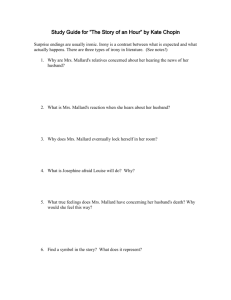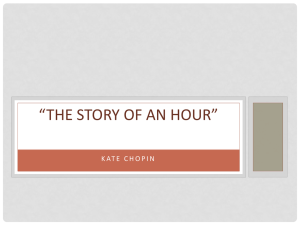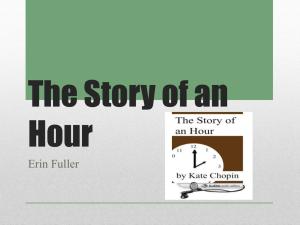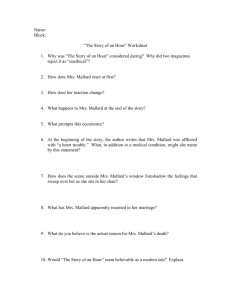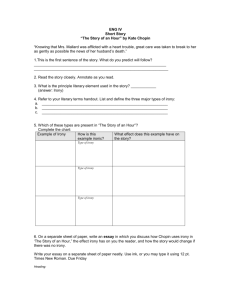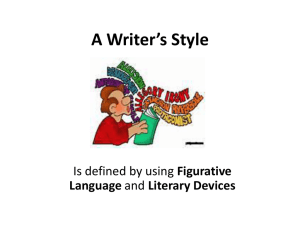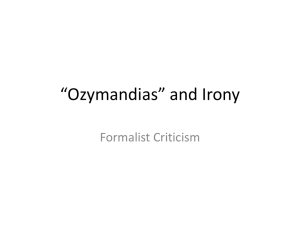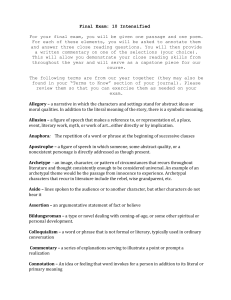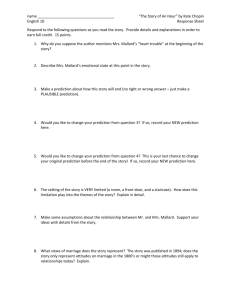"The Story of an Hour" Literary Guide by Kate Chopin
advertisement
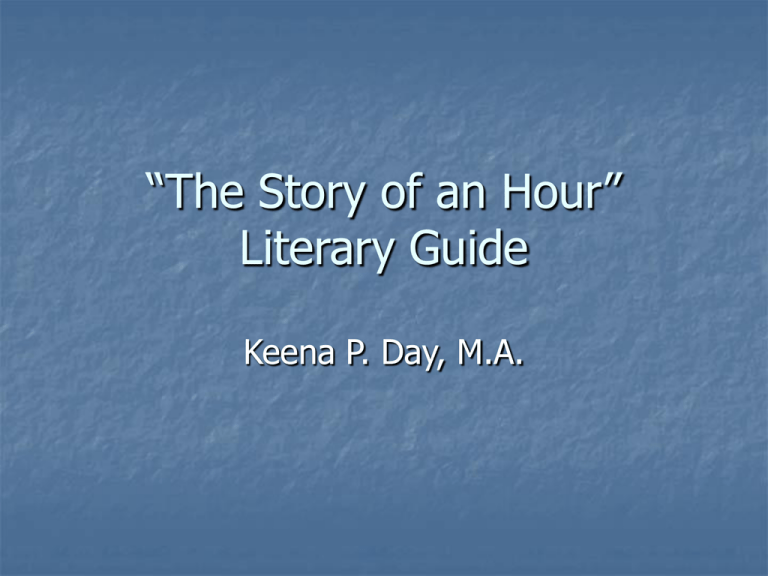
“The Story of an Hour” Literary Guide Keena P. Day, M.A. Author: Kate Chopin (1851-1904) Wrote two published novels and about a hundred short stories in the 1890s (Realism Literary Period) Most of her fiction is set in Louisiana and most of her best-known work focuses on the lives of sensitive, intelligent women. Before You Read Predict what you think might happen in this text from the first line: “Knowing that Mrs. Mallard was afflicted with a heart trouble, great care was taken to break to her as gently as possible the news of her husband's death.” Literary Elements: Symbols Symbols- Determine what these objects and people might stand for while reading the text: Heart Troubles Heart Mrs. Mallard Spring time Patches of Blue Sky Chair facing an open window Literary Elements: Irony Irony: When something opposite of what was expected happens Verbal- saying something but meaning the opposite (sarcasm and understatement are included) Situational- when a situation happens that is opposite of what was expected. Dramatic- when the audience knows information characters don’t know Look for examples of irony within the text: red pencil/crayon for examples of verbal irony, blue for situational irony and green for dramatic irony Literary Elements Look for examples of: Foreshadowing Figurative Language Use of Diction to create imagery within the text Vocabulary Assignment During the story, write down 5 words in your vocabulary section that Discussion Questions What is the customary reaction of a person who loses a spouse? What are reasons for a person to not have this type of response? How might heart trouble be more than a physical ailment? Note that this is the first thing we are told about her and how other people respond to her. Evidently this is--at least for those around her--an important part of who she is. Who took care? Why is this written in the passive voice, with a "hidden" subject? What does this construction suggest about Mrs. Mallard's customary environment? Not hearing the news- Why are we first told how she does NOT hear the news? What does this reaction suggest about her? about how "ladies" were expected to react? Look for repeated uses of the negatives and positives in the story and consider why they might be used. Writing Activities What is your interpretation of Mrs. Mallard’s death? Write a persuasive essay, using textual evidence, to support your thoughts. Write a comparison/contrast essay differentiating the use of irony within the text (namely situational and dramatic irony) and use textual evidence to show this contrast (4-5 paragraph essay) Discuss symbols within the text. Discuss, using textual evidence, your interpretation of these symbols
